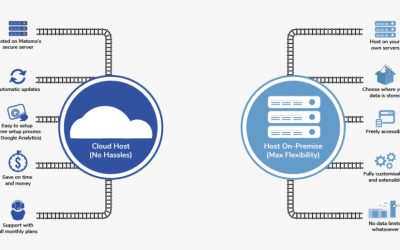In today’s rapidly evolving technological landscape, many organizations are embracing the power of cloud computing to accelerate their digital transformation journey. However, as businesses grow and their requirements become more complex, they often find themselves utilizing multiple cloud providers simultaneously. This multicloud approach offers several advantages, including enhanced redundancy, vendor flexibility, and cost optimization. However, managing and optimizing resources across multiple cloud platforms can quickly become challenging without the right tools and strategies in place.
This is where multicloud orchestration comes into play. Multicloud orchestration refers to the practice of managing and optimizing resources across multiple cloud providers through automation and centralized control. In this blog post, we will explore the concept of multicloud orchestration, its benefits, and some popular tools and frameworks used to simplify the management and optimization of resources in a multicloud environment.
The Need for Multicloud Orchestration
As organizations adopt a multicloud strategy, they often face a set of common challenges:
1. Vendor Lock-In: Relying on a single cloud provider can create vendor lock-in, limiting flexibility and making it difficult to switch providers or take advantage of specialized services from different vendors.
2. Complexity: Managing resources across multiple cloud providers introduces complexity in terms of provisioning, monitoring, security, and cost management. Each cloud provider has its own set of APIs, management consoles, and tools, making it challenging to maintain a consistent management approach.
3. Optimization: Without proper orchestration, organizations may struggle to optimize their resource utilization, resulting in underutilized or overprovisioned resources, leading to increased costs and inefficient performance.
Multicloud orchestration addresses these challenges by providing a unified management layer that abstracts the underlying cloud providers, enabling organizations to deploy, manage, and optimize their resources seamlessly across multiple clouds.
Benefits of Multicloud Orchestration
1. Flexibility and Vendor Neutrality: Multicloud orchestration allows organizations to choose the best cloud services and features from multiple providers, avoiding vendor lock-in. This flexibility enables businesses to leverage the strengths of different cloud providers and customize their infrastructure according to their specific requirements.
2. Centralized Management: With multicloud orchestration, organizations can centralize resource provisioning, configuration, monitoring, and security policies. This simplifies management and reduces the complexity associated with managing multiple clouds individually.
3. Improved Resilience and Redundancy: By distributing workloads across multiple cloud providers, organizations can enhance their overall system resilience and reduce the risk of downtime. If one provider experiences an outage or performance degradation, the workload can be seamlessly shifted to another provider, ensuring business continuity.
4. Cost Optimization: Multicloud orchestration enables organizations to optimize costs by dynamically allocating resources based on workload demands. It allows automated scaling, load balancing, and resource optimization techniques to ensure efficient resource utilization and cost savings.
Multicloud Orchestration Tools and Frameworks
To simplify the management and optimization of resources across multiple cloud providers, organizations can leverage various tools and frameworks specifically designed for multicloud orchestration. These tools provide a unified interface, automation capabilities, and centralized control to streamline operations in a multicloud environment. Let’s explore some popular tools and frameworks used for multicloud orchestration:
Control Plane Tools for Multicloud Orchestration
When it comes to multicloud orchestration via a control plane, there are several tools available in the market that can help simplify the management and optimization of resources across multiple cloud providers. Let’s explore some popular control plane tools:
1. Anthos (Google Cloud): Anthos, offered by Google Cloud, is a hybrid and multicloud platform that provides a control plane for managing workloads across different cloud providers, including Google Cloud, AWS, and Azure. It enables organizations to build, deploy, and manage applications consistently across on-premises and multicloud environments. Anthos offers a unified dashboard, security features, and monitoring capabilities to ensure seamless operations in a multicloud setup.
2. Azure Arc (Microsoft Azure): Azure Arc, provided by Microsoft Azure, is a control plane tool that extends Azure management capabilities to other clouds and on-premises environments. It allows organizations to manage and govern resources across multiple cloud providers, including Azure, AWS, and Google Cloud, from a centralized Azure portal. With Azure Arc, you can apply Azure policies, deploy and manage Kubernetes clusters, and monitor resources in a consistent manner across different clouds.
3. IBM Multicloud Manager: IBM Multicloud Manager, as mentioned earlier, is an enterprise-grade multicloud orchestration platform. It provides a control plane for managing resources across multiple clouds, including IBM Cloud, AWS, and Azure. IBM Multicloud Manager offers a unified dashboard, policy-based governance, application lifecycle management, and multi-cluster management capabilities. It enables organizations to simplify multicloud operations and ensure consistent management and optimization of resources.
4. HashiCorp Consul: HashiCorp Consul is a service mesh and service discovery tool that can be utilized as a control plane for multicloud orchestration. It enables organizations to connect, secure, and configure services across multiple clouds and data centers. Consul provides a centralized registry of services and facilitates service-to-service communication, traffic management, and security policies. With Consul, organizations can achieve consistent service discovery and management across different cloud providers.
5. Cloudify: Cloudify is an open-source multicloud orchestration framework that provides a model-driven approach to deploy and manage applications on multiple clouds. It supports various cloud providers, allowing you to define application blueprints and deployment policies in a vendor-agnostic manner.
By leveraging a control plane tool, organizations can streamline the management of resources, ensure consistent governance and security policies, and optimize operations across multiple cloud providers, ultimately simplifying the complexities of a multicloud environment.
Multicloud with Kubernetes and Infrastructure-as-Code (IaC)
Kubernetes, a container orchestration platform, has gained significant popularity in the multicloud space due to its ability to abstract the underlying infrastructure and provide a consistent deployment and management experience across multiple cloud providers. When combined with Infrastructure-as-Code (IaC) practices, organizations can effectively manage and orchestrate multicloud environments with ease. Let’s explore how Kubernetes and IaC contribute to multicloud orchestration:
Kubernetes for Multicloud Orchestration
Kubernetes allows organizations to deploy and manage containerized applications seamlessly across different cloud providers. It provides a declarative approach to application deployment and scaling, offering portability and flexibility across multicloud environments. With Kubernetes, organizations can define deployment manifests, which describe the desired state of their applications and infrastructure.
By leveraging Kubernetes in a multicloud environment, organizations can benefit from the following:
1. Portability: Kubernetes abstracts the underlying infrastructure, enabling applications to run consistently across various cloud providers. This portability allows organizations to avoid vendor lock-in and choose the most suitable cloud provider for specific workloads.
2. Scaling and Load Balancing: Kubernetes provides built-in scaling and load balancing capabilities, allowing organizations to dynamically allocate resources based on workload demands. This ensures efficient resource utilization and improved application performance across multiple clouds.
3. Resource Optimization: Kubernetes enables organizations to optimize resource allocation by leveraging its autoscaling capabilities. It can automatically scale resources up or down based on predefined metrics, ensuring efficient utilization of resources and cost optimization.
Infrastructure-as-Code (IaC) for Multicloud Orchestration
Infrastructure-as-Code (IaC) is an approach that treats infrastructure configuration and provisioning as code. It allows organizations to define their infrastructure and deployment requirements using code, enabling repeatability, consistency, and version control. When applied to multicloud environments, IaC simplifies the management and orchestration of resources across multiple cloud providers.
By utilizing IaC in a multicloud setup, organizations can achieve the following benefits:
1. Consistent Configuration: IaC enables organizations to define infrastructure configurations using code, ensuring consistency across multiple cloud providers. Changes to infrastructure can be easily tracked, versioned, and deployed in a controlled manner, reducing the risk of configuration drift and ensuring reproducibility.
2. Automation and Provisioning: IaC tools, such as Terraform, allow organizations to automate the provisioning and management of infrastructure resources across different cloud providers. With a single set of declarative configuration files, organizations can provision and manage resources consistently, irrespective of the underlying cloud platform.
3. Infrastructure Governance: IaC provides a framework for enforcing infrastructure governance policies across multicloud environments. By defining infrastructure as code, organizations can implement security measures, access controls, and compliance requirements consistently across multiple cloud providers.
By combining Kubernetes for container orchestration and IaC for infrastructure provisioning and configuration, organizations can effectively manage and orchestrate resources in multicloud environments. This approach provides a high level of abstraction, portability, consistency, and automation, allowing organizations to leverage the benefits of multicloud while maintaining control and efficiency in their deployments.
Multicloud orchestration plays a vital role in simplifying the management and optimization of resources across multiple cloud providers. It offers flexibility, centralized control, and cost optimization, empowering organizations to leverage the strengths of different cloud platforms while avoiding vendor lock-in. By utilizing the right tools and frameworks for multicloud orchestration, businesses can achieve seamless resource management, enhanced resilience, and cost savings, enabling them to focus on innovation and achieving their business objectives in the multicloud era.






